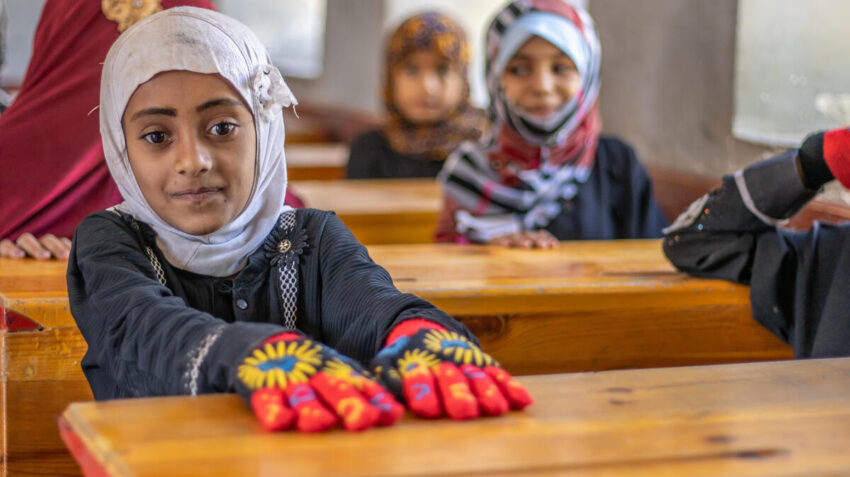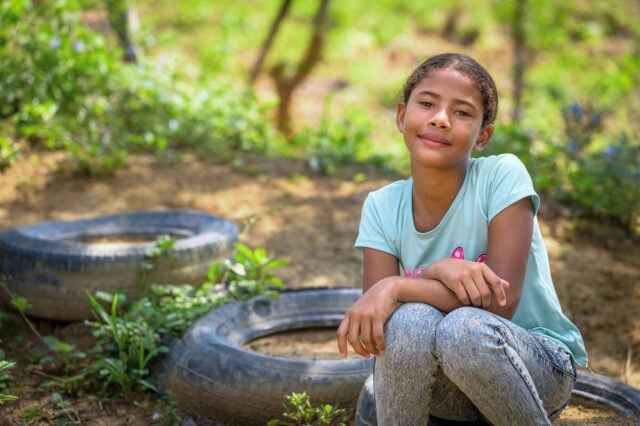Children in Yemen are facing a severe crisis. Years of conflict and extreme weather have pushed families to the brink of starvation. Families are struggling to survive, with children bearing the brunt of suffering: Hunger, disease, and displacement are daily realities.
Yemen crisis: Facts, FAQs, and how to help
- Fast facts: Yemen crisis
- What is the current crisis in Yemen?
- How has the crisis affected children in Yemen?
- Why is hunger prevalent in Yemen?
- What is the current level of hunger in Yemen?
- What is World Vision doing to help impacted children and families in Yemen?
- How can I help the Yemeni people?
Fast facts: Yemen crisis
- Embroiled in conflict since 2014, Yemen has experienced widespread destruction, forcing the displacement of an estimated 4.5 million people.
- Over 21 million people in Yemen, including 11.3 million children, need humanitarian aid.
- Of all displaced people in Yemen, more than three-quarters are women and children. At least 26% of displaced households are led by females — 20% of whom are under 18.
- Malnutrition rates among women and children in Yemen remain among the highest globally, with 1.3 million pregnant or breastfeeding women needing treatment for acute malnutrition.
- Approximately 80% of the population lives below the poverty line.
What is the current crisis in Yemen?
The crisis in Yemen remains dire, with the ongoing conflict having a devastating impact on the country’s economy and infrastructure, leading to widespread poverty and a severe lack of essential services. While large-scale fighting has decreased, sporadic violence continues, furthering instability and suffering across the nation.
How has the crisis affected children in Yemen?
Children are experiencing unimaginable hardships as a result of this crisis. Approximately 9.8 million children urgently need humanitarian assistance. There is widespread malnutrition, with over 2.7 million children suffering from acute malnutrition and almost half of all children under 5 experiencing stunting or chronic malnutrition, which has a devastating impact on their physical and cognitive development.
The conflict has disrupted access to education and healthcare, as many schools and hospitals have been damaged or closed, leaving children without critical services.
Children are increasingly vulnerable to exploitation, violence, and recruitment by armed groups. Since the start of the conflict, over 11,500 children have been killed or injured.
Why is hunger prevalent in Yemen?
Several factors combine to create widespread hunger in Yemen, including prolonged conflict, economic crisis, and extreme weather events.
What is the current level of hunger in Yemen?
The hunger crisis in Yemen remains severe. Up to an estimated 17.3 million people are food insecure, with many experiencing high levels of acute food insecurity. The situation is particularly dire for 5 million children under 5, and millions of pregnant and breastfeeding women. Despite ongoing humanitarian efforts, conflict, economic instability, and weather-related challenges exacerbate the crisis.
What is World Vision doing to help impacted children and families in Yemen?
In November 2019, World Vision began working alongside other agencies to support children in Yemen. Partnering with the Adventist Development and Relief Agency (ADRA), World Vision’s efforts in 2020 focused on rehabilitating septic tanks and community water systems, including 29 water access points in key regions. By 2023, we enabled 41,854 people to access clean water, improved sanitation, and hygiene promotion services.
In 2023, through our partnership with Medair, we reached 52,709 people, including 25,902 children, with improved access to health, nutrition, child protection, and WASH programs. We’re supporting five health centers and mobile health teams to distribute lifesaving aid to families living in remote communities in South Yemen. These efforts are strengthening the treatment of acute malnutrition, promoting healthier feeding practices among mothers and young children, and ensuring free access to quality primary healthcare services at the community level.
Dedicated to protecting the children of Yemen, World Vision continually assesses our programs to best respond and support vulnerable children and their families.
How can I help the Yemeni people?
Here are some ways you can help bring hope to people in Yemen:




